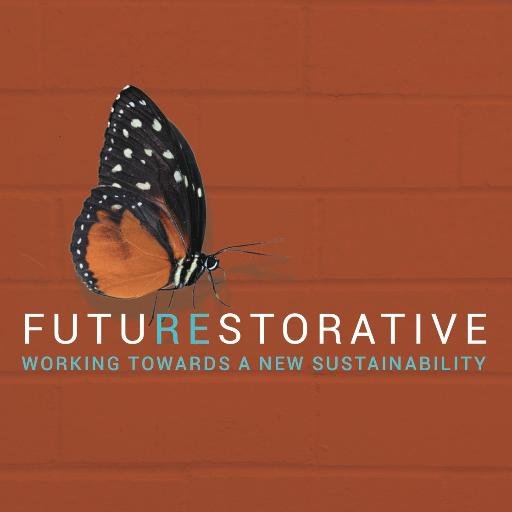Against a backdrop of climate change activism, declarations of climate emergency, reports for zero carbon UK by 2050 and the UN dire report on biodiversity breakdown, the ILFI launched the latest version of the Living Building Challenge (4.0) and associated programmes at the Living Future conference 2019 in Seattle, ramping up the challenge’s leading edge position in philosophy, advocacy and certification for a regenerative future, whilst balancing effort and impact.
In addition the ILFI launched Core Certification. A programme seeking “To rapidly diminish the gap between the highest levels of established green building certification programs and the aspirations of the Living Building Challenge”
The Backdrop: Over the last months and weeks we have seen an awakening of the urgency we face, with street, school and business activism alongside a number of key government and international reports, namely:
The Special Report on Global Warming of 1.5 °C (SR15) published by the Intergovernmental Panel on Climate Change (IPCC) on 8 October 2018
UK Parliament climate change emergency declaration
UK CCC report: Net Zero – The UK’s contribution to stopping global warming calls for net zero carbon UK by 2050 (Scotland 2045, Wales 2055)
The UN Biodiversity Report, to be launched on Monday is seen as the ecological equivalent to the Paris 1.5 deg c and will sharpen up our responses to thinking as part of nature, rather than apart from nature. Report:
Are we now, at last, seeing the emergence of a woke built environment on the verge of responding to a climate emergency, truly acting on regenerative sustainability imperatives?
LBC 4.0
The revised version of the Living Building Challenge has been developed based on two goals: to simplify the program so the level of effort of teams is better aligned with their impacts, at both project and market scales; and to fill the gap between the highest levels of mainstream green building certifications, and the entry point to the living building challenge.
The resulting standard is streamlined, eliminating time consuming requirements that were not directly influencing projects or markets. LBC 4.0 raises the bar by requiring that teams address basic issues in all petals, even if the project is primarily focused on a more limited scope of priorities. In addition, a number of new performance-based compliance paths have been added to increase flexibility for teams. These changes promise to relieve some of the frustrations of the previous versions, while maintaining the high standards and inspirational vision that the ILFI community expects from the Living Building Challenge
Key rivers for the update are reported as:
– Climate Change
– Social Inequality
– Water Scarcity
– Filling a gap in the certification market
The Living Building Challenge now has ten Core Imperatives that address the fundamental tenets of each Petal. All the Core Imperatives are required for Petal Certification, and together they constitute the requirements of the new Core Green Building Certification. Notable updates in LBC 4.0 by Imperative include:
I-01 Ecology of Place includes a performance-based approach to the project location and local ecology and community.
I-02 Urban Agriculture introduces a secondary path to improve the accessibility to fresh food in conjunction with on-site food production. Required percentages of site area have been simplified and are now based on Transect rather than Floor Area Ratio (FAR). Food storage requirements are modified.
The Water Petal has been divided into two Imperatives, Core and Living, and requires comparison to a baseline.
The Energy Petal: Separated in two Imperatives, Core and Living, and now incorporates an EUI minimum and embodied carbon.
I-09 Healthy Interior Environment is now a Core Imperative that outlines baseline requirements to achieve good indoor air quality.
I-10 HEALTHY INTERIOR PERFORMANCE includes some of the previous requirements of LBC 3.1 Civilized Environment and Healthy Interior Environment plus some expanded options for fresh air and controls.
I-11 Access to Nature is a new Imperative based on one of the previous requirements of the LBC 3.1 Biophilic Environment Imperative.
I-12 Responsible Materials is a new Core Imperative setting a materials baseline for all projects.
I-13 Red List has an updated list based on classes of chemicals, as a means to clarify the process for updating the Red List Chemical Abstract Services Registry Number list and avoid regrettable substitutions. The threshold for compliance has been set at 90%.. A realist Watchlist is introduced.
I-14 Responsible Sourcing added an FSC project certification pathway and the calculation to determine the number of required Declare labels has been changed.
I-18 Inclusion is a new Imperative addressing diversity in hiring and access to training. The Just label requirement has been changed and incorporated in this Imperative.
I-19 Biophilic Design includes most of the requirements of the LBC 3.1 Biophilic Environment Imperative integrated with the requirements from the LBC 3.1 Beauty + Spirit Imperative.
I-20 Education + Inspiration now requires one Living Future Accredited (LFA) professional on each project team.
Download the LBC4.0 Standard from here
CORE
The new CORE certification programme launched by ILFI, responds to climate change whilst demanding holistic high performance, seeking to rapidly diminish the gap between the highest levels of established green building certification programs and the aspirations of the Living Building Challenge.
Core is based on 10 best practice imperatives taken from the new LBC4.0 standard, positioned as being the stepping stone to full Living Certification, encouraging projects to progress from business as usual sustainability to regenerative sustainability. It puts the connection to nature, equity and the need for a building to be loved on even footing with the typical water, energy and materials concerns.
Ecology of Place
Human Scale Living
Responsible Water Use
Energy and Carbon Reduction
Healthy Interior Environment
Responsible Materials
Universal Access
Inclusion
Beauty and Biophilia
Education and Inspiration
Download the Core Standard from here
My Perspective …
We need to read more on the background detail when released, (Petal handbooks will be available later in 2019). One of my litmus tests over last months, forcing me to re-question most of our sustainability approaches, are the observations from Greta Thunberg and other activists, asking us not to be hopeful but to panic and act today. I am also haunted by the comments and thinking from Lloyd Alter that we don’t have the luxury of time for LCA – in that what we do over the next 12 years is more important than future years. If we don’t act and reverse carbon and global warming by 2030 then we will be in a whole new ball game.
We need to address (and remove) upfront carbons that we will pump into buildings over the next 12 years. And this is going to be tough, as the UK CCC report hints – it will mean remove carbon heavy materials from buildings – eg concrete, starting from today. In addition we need to ramp up and reverse biodiversity loss- we will only do this with a new Seva mindset view, as detailed within COST Restore, where we see ourselves a part of nature, not apart from nature
Whilst representing a huge step forward, urgency in adoption and implementation is vital, as the IPCC and UN reports clearly demonstrate and a message that resonated throughout the Living Future Conference. And a key acid test for regenerative plans, such as LBC4.0 is to invite scrutiny from youth activists, such as Greta Thunberg and Jamie Margolin (who spoke with passion for action at LF19 in Seattle) and the XR movement.
Updates, Introduction Sessions and Workshops for LBC4.0 and Related Programmes
There will be introduction roll out sessions to LBC4.0 in the UK and across Europe within the coming months. Watch for details.
If you like this please share:

























